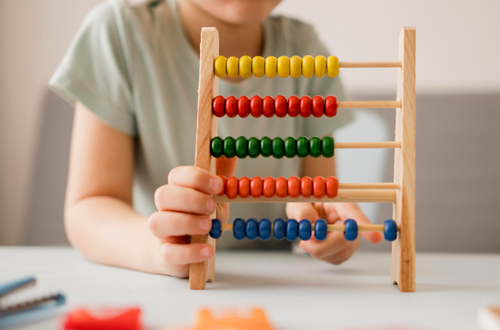Build Your Dream Physics Laboratory
Welcome to our dedicated Physics Laboratory page, In your dream laboratory, education and innovation go hand in hand. Here, students and professionals alike can push the boundaries of knowledge, turning theoretical concepts into practical applications. Together, let’s make physics not just a subject, but a vibrant community of discovery. Build your dream physics laboratory and unlock the secrets of the universe!
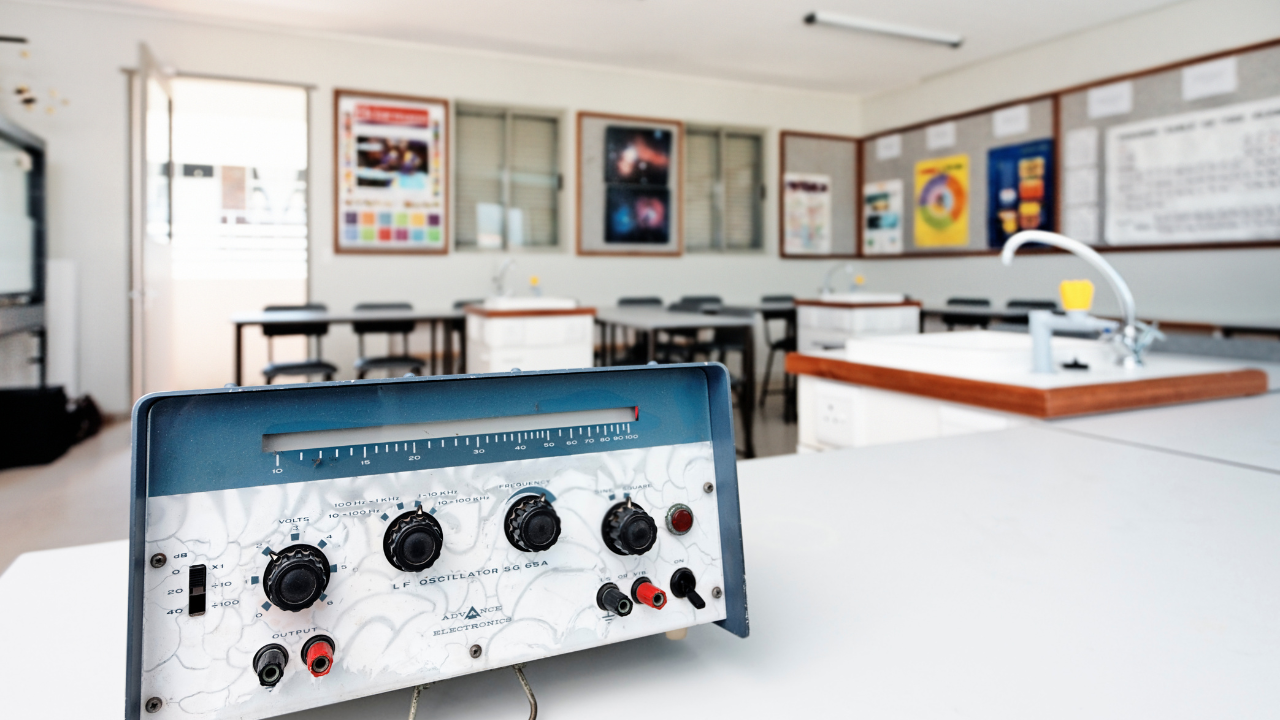

Shop Now!
"Browse our collection and find everything you need to set up your physics laboratory. With our top-notch equipment, you’ll be ready to transform theory into real-life practical in no time!"
Court Dimensions
A standard basketball court is rectangular, measuring 94 feet long by 50 feet wide for professional play. However, if space is limited, a half-court setup is a great option, measuring 47 feet long by 50 feet wide. Here’s a breakdown of key features and dimensions: Three-Point Line: The distance varies based on the level of play: NBA: 23.75 feet (22 feet in the corners) NCAA: 22.15 feet High School: 19.75 feet Free Throw Line: Positioned 15 feet from the backboard. Key Area (Paint): Measures 16 feet wide and extends 19 feet from the baseline. Basket Height: The hoop is set at 10 feet above the playing surface.
Constructing Your Physics Laboratory
Physics Laboratory Construction and Setup Overview
1. Project Planning and Design
Objective: To create a fully functional physics laboratory that supports a wide range of experiments and research activities.
Design Considerations:
- Space allocation for various lab activities (e.g., mechanics, optics, electromagnetism)
- Compliance with safety regulations and standards
- Accessibility and ease of movement for both equipment and personnel.
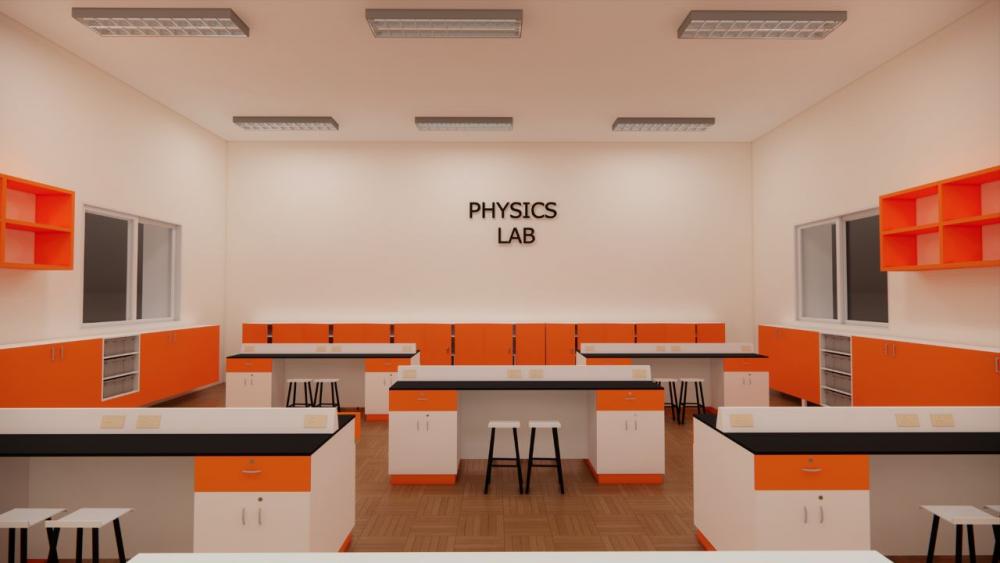
2. Civil Work
Site Preparation:
- Clearing and Excavation: Removal of existing structures and debris, leveling the ground for foundation work.
- Foundation Construction: Pouring concrete footings and foundations to support heavy equipment and ensure stability
Structural Work:
- Walls and Flooring: Building durable walls with soundproofing materials; installing resilient flooring that can withstand spills and heavy foot traffic.
- Ceiling Installation: Ensuring sufficient height for experiments requiring overhead apparatus, with acoustic treatment for sound reduction.
Utilities Installation:
- Electrical Systems: Installing outlets, power panels, and wiring to support laboratory equipment. Ensuring adequate power supply for high-demand instruments.
- Plumbing: Setting up sinks and drainage systems for experiments involving liquids.
- HVAC Systems: Installing heating, ventilation, and air conditioning systems to maintain a controlled environment.
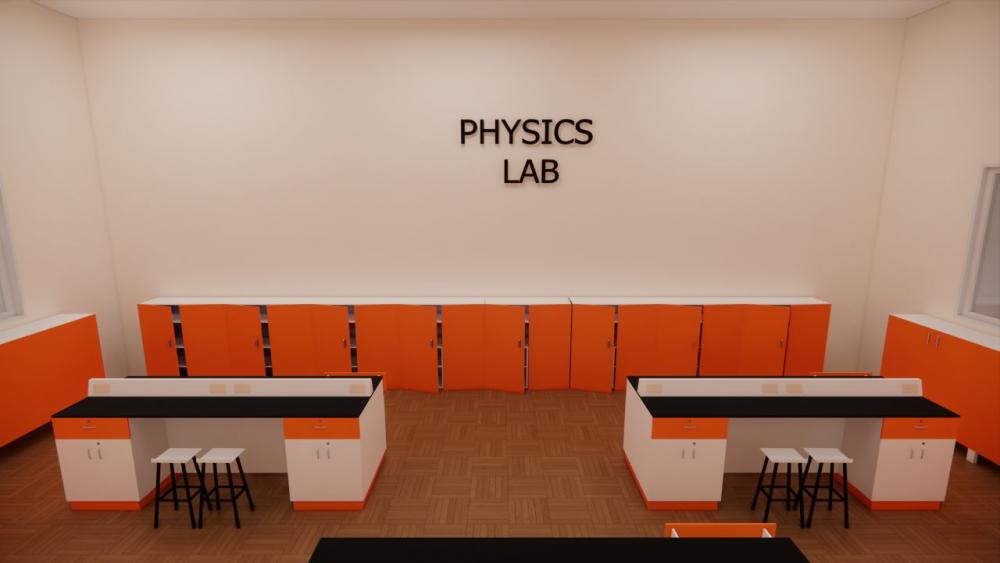
3. Laboratory Layout and Design
Floor Plan Development:
- Designating areas for different types of experiments (e.g., a dedicated optics section, mechanics setup).
- Ensuring sufficient workspace around each station for safety and ease of access.
Safety Features:
- Emergency exits, fire extinguishers, and safety showers strategically placed.
- Installation of fume hoods and ventilation systems for experiments involving hazardous materials.
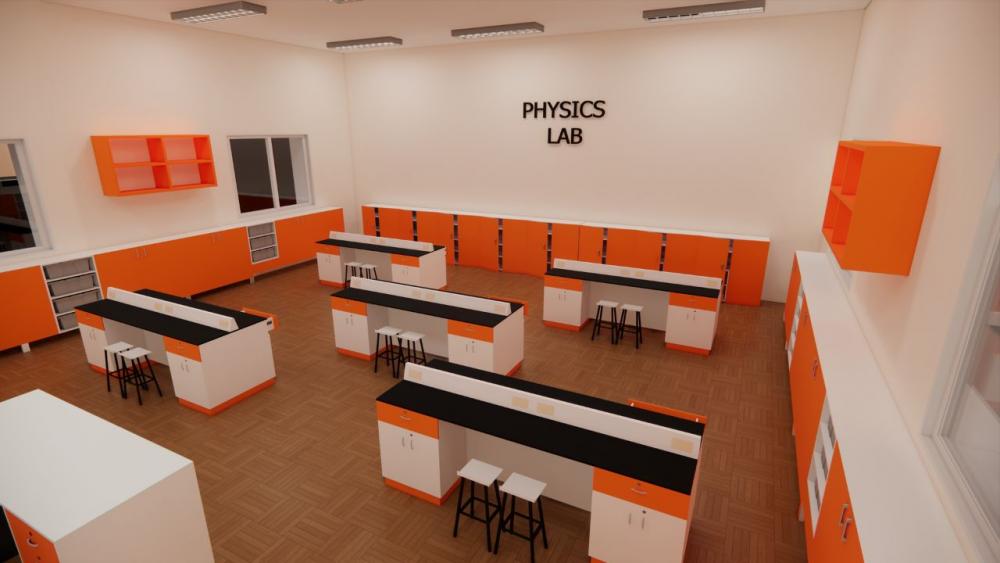
4. Setup of Lab Instruments
Equipment Selection:
- Identifying and procuring essential laboratory equipment (e.g., oscilloscopes, spectrometers, lasers, etc.).
- Ensuring that all instruments are compatible with the electrical and plumbing setups.
Installation:
- Proper calibration of all instruments according to manufacturer specifications.
- Setting up a centralized control panel for easy management of equipment.
Testing:
- Conducting thorough testing of all instruments to verify functionality and accuracy.
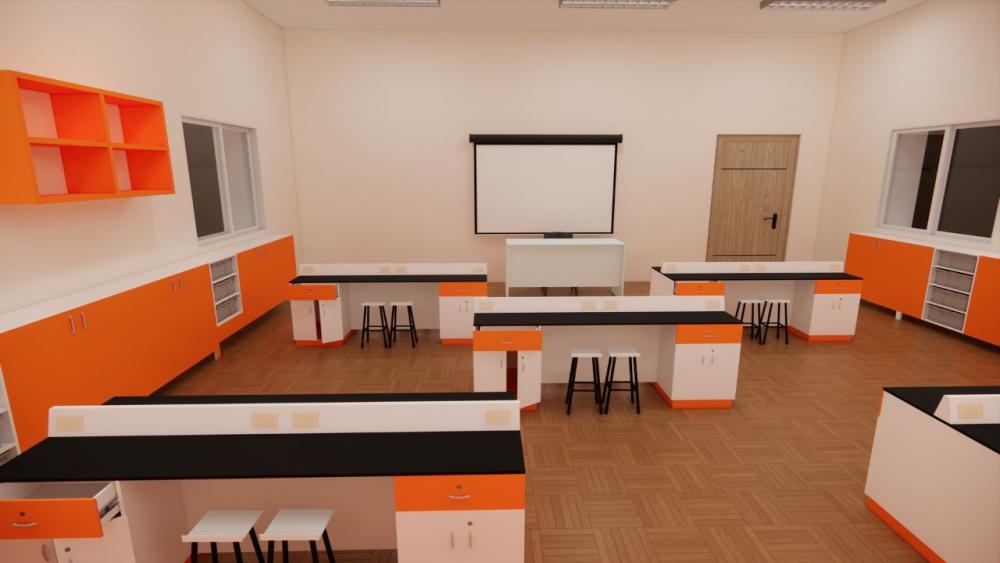
5. Furniture Installation
Lab Furniture:
- Installing durable workbenches and tables designed to accommodate heavy equipment and provide ample workspace.
- Setting up storage solutions (e.g., cabinets, shelves) for easy organization of materials and instruments.
Seating Arrangements:
- Providing ergonomic chairs for comfort during long periods of experimentation.
- Arranging seating in a way that promotes collaboration and communication among students and researchers.
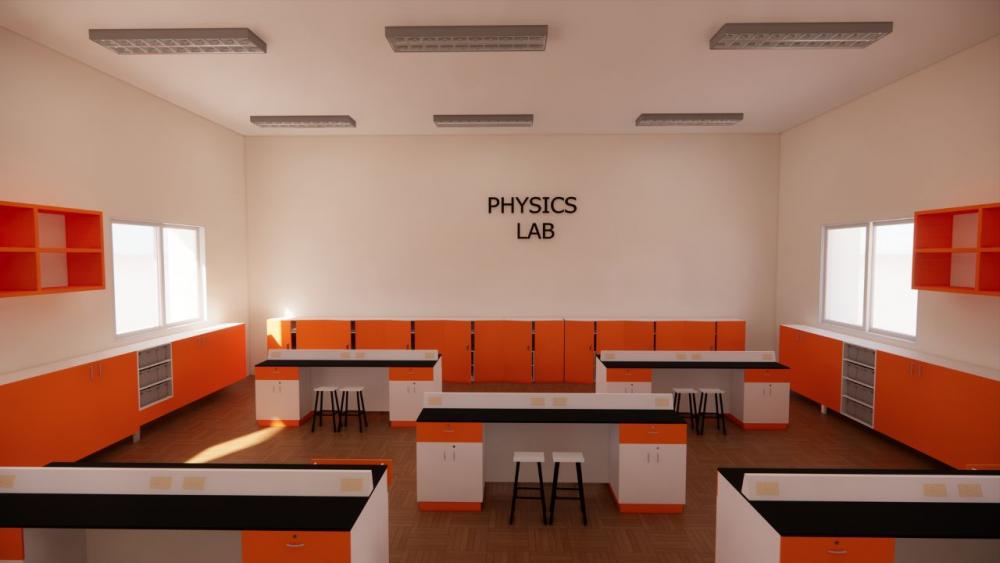
6. Final Inspection and Quality Assurance
Compliance Checks:
- Conducting a final inspection to ensure all aspects of the laboratory meet safety and regulatory standards.
- Verifying that all equipment is operational and properly maintained.
Training and Orientation:
- Offering training sessions for staff and students on the proper use of equipment and safety protocols.
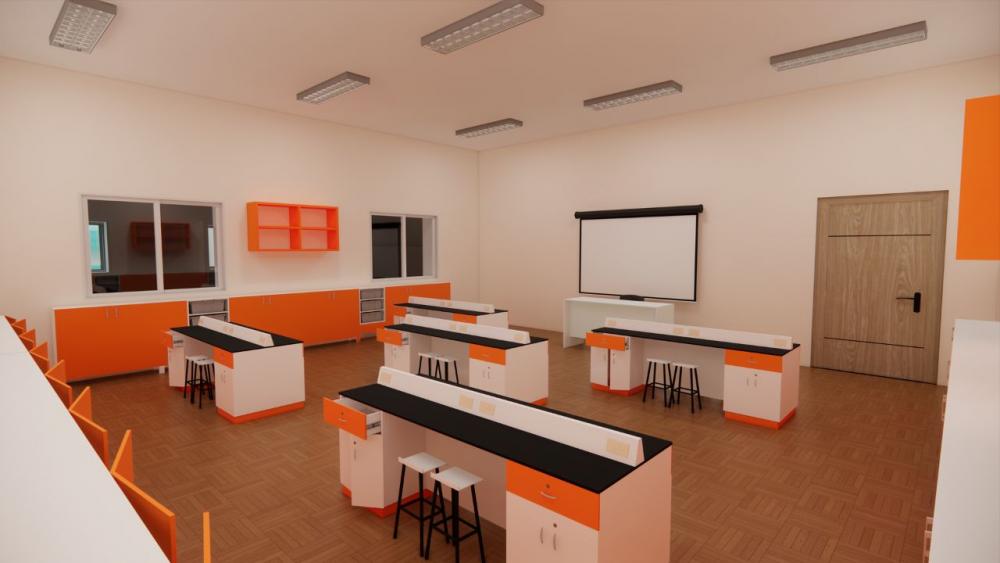
Conclusion
The successful construction and setup of a physics laboratory require careful planning and execution at every stage, from civil work to the installation of instruments and furniture. By focusing on functionality, safety, and compliance, the lab will serve as a vital space for education and research in physics.
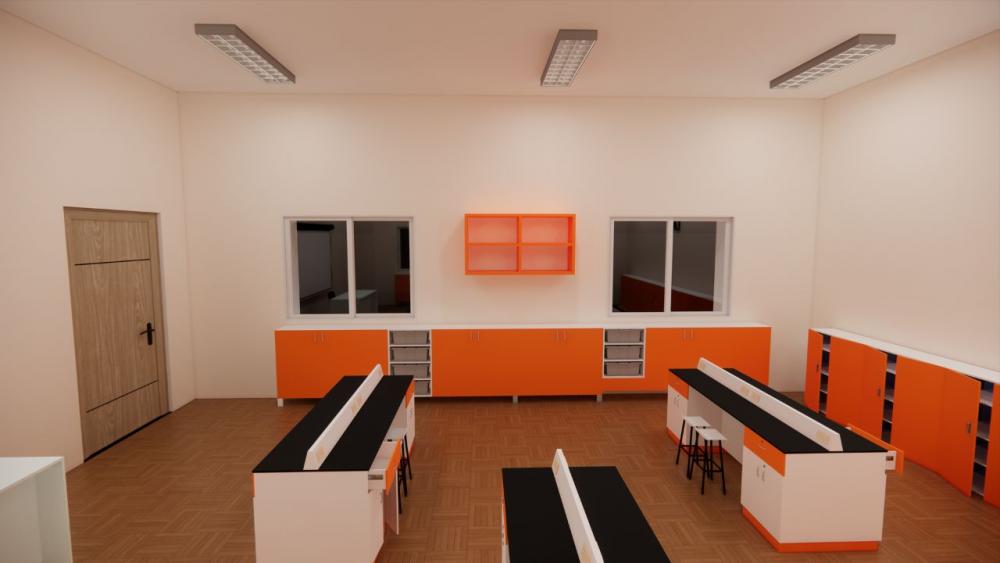
Ready to take your Physics Laboratory practicals experience to the next level? Let’s get started on building your dream Physics Laboratory today!

